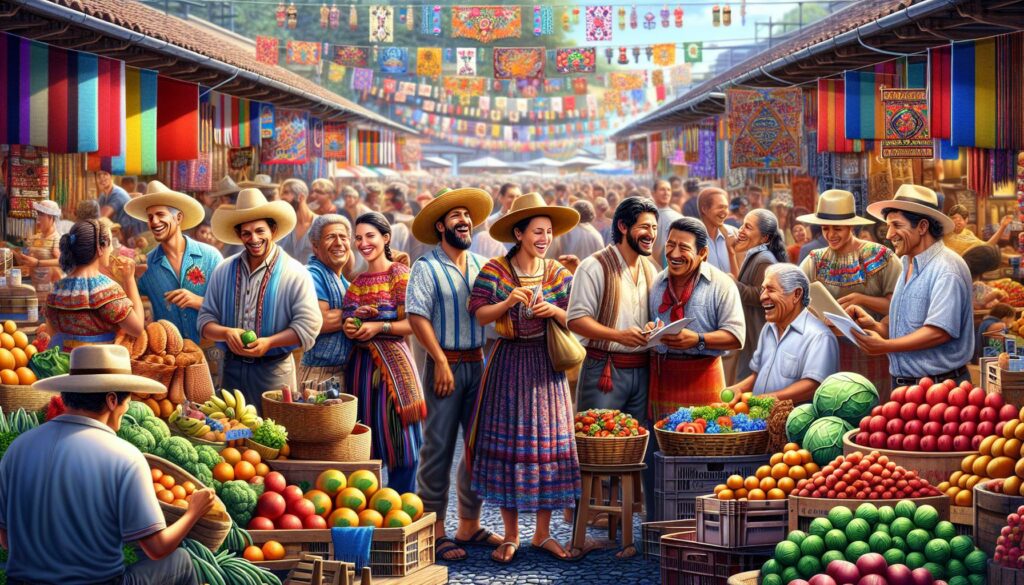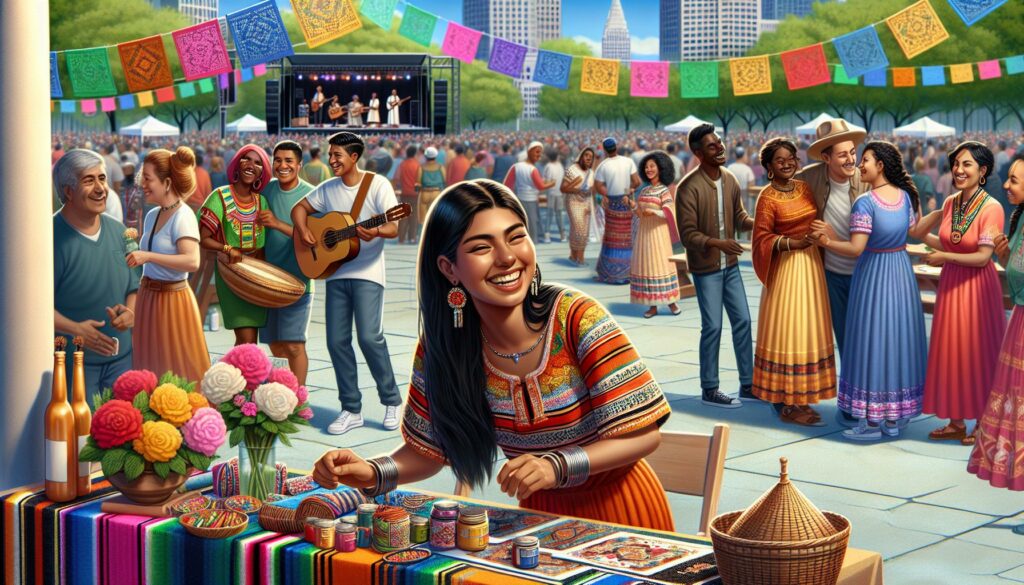As I explore the vibrant tapestry of Costa Rica’s cultural landscape, I’m constantly amazed by the rich traditions that shape this Central American paradise. From the lively streets of San José to the remote villages of Guanacaste, Costa Rican culture pulses with an infectious energy that captivates visitors and locals alike.
I’ve discovered that Costa Rica’s cultural activities reflect a fascinating blend of indigenous heritage, colonial influence and modern Latin American flair. Whether it’s joining in traditional dance performances, participating in colorful festivals or savoring authentic cuisine at local markets – there’s an endless array of cultural experiences waiting to be discovered. The warmth of ticos (Costa Ricans) and their commitment to “”pura vida”” (pure life) creates an inviting atmosphere that makes exploring these traditions even more meaningful.
Key Takeaways
- Traditional Costa Rican culture blends indigenous heritage, colonial influences, and modern Latin American elements through dance, music, and festivals
- The country’s signature performances include the Punto Guanacasteco national dance, traditional religious celebrations like Las Posadas, and vibrant cultural parades featuring mascaradas (giant puppets)
- Costa Rica’s artistic heritage is preserved through indigenous pottery making, traditional mask carving, and contemporary art galleries showcasing local talent
- Culinary experiences center around authentic cooking classes, coffee plantation tours, and food markets that highlight the nation’s diverse gastronomy
- Performance venues like the historic National Theater and intimate local spaces offer year-round cultural shows featuring music, dance, and theatrical productions
Cultural Activities in Costa Rica
Costa Rican dance and music combine Spanish colonial influences with indigenous rhythms to create unique cultural expressions. Traditional performances showcase the country’s artistic heritage through vibrant costumes, energetic movements and distinctive musical compositions.
Popular Folk Dances
The Punto Guanacasteco embodies Costa Rica’s national dance with its graceful partner movements and colorful traditional attire. Other significant dances include:
- El Torito (The Little Bull): Features dancers mimicking bullfighting movements while wearing elaborate masks
- La Cajeta: Showcases couples performing intricate footwork patterns to marimba music
- El Pavo (The Turkey Dance): Incorporates playful movements imitating strutting turkeys in courtship
- Pasacalles: Involves large group performances with dancers parading through streets during festivals
Musical Instruments and Styles
Traditional Costa Rican music relies on a combination of percussion and string instruments that create distinctive tropical rhythms. Key elements include:
- Marimba: A wooden xylophone producing the signature sound of Guanacasteco music
- Quijongo: A single-string bow instrument creating deep resonant tones
- Ocarinas: Pre-Columbian clay flutes used in indigenous ceremonies
- Tambores: Hand-carved wooden drums producing varied percussion beats
- Parrandera: Fast-paced party music with marimba melodies
- Calypso: Caribbean-influenced rhythms popular in Limón province
- Tambito: Traditional folk style featuring prominent drum patterns
- Retahíla: Call-and-response singing accompanied by acoustic guitars
Religious Festivals and Celebrations
Religious celebrations form an integral part of Costa Rica’s cultural identity, blending Catholic traditions with indigenous customs. These festivities transform cities, towns, and villages into vibrant displays of faith, culture, and community spirit.
Christmas and Holy Week Traditions
Costa Rica’s Christmas season begins in early December with Las Posadas, a nine-day celebration reenacting Mary and Joseph’s search for lodging. Traditional activities include:
- Decorating homes with portales (nativity scenes) featuring handcrafted figurines
- Lighting faroles (colorful lanterns) during evening processions
- Sharing tamales wrapped in banana leaves at family gatherings
- Attending Misa de Gallo (Midnight Mass) on December 24
Holy Week (Semana Santa) observances include:
- Palm Sunday processions with blessed palm fronds
- Thursday vigils at seven churches (Visita de las 7 Iglesias)
- Good Friday dramatizations of the Passion of Christ
- Easter Sunday masses with special musical performances
Local Saint Day Festivities
Each Costa Rican community celebrates its patron saint with unique festivals called fiestas patronales. Notable celebrations include:
- Virgin of Los Angeles Day (August 2)
- Pilgrimage to Cartago Basilica
- Traditional healing rituals
- Cultural performances
- Religious processions
- Saint Joseph’s Day (March 19)
- Special masses in San José
- Street fairs with local food
- Traditional dance shows
- Artisan markets
- La Negrita Festival
- Annual celebration honoring Costa Rica’s patron saint
- Two-week festivities in Cartago
- Traditional romería (pilgrimage)
- Cultural performances
- Local food vendors selling traditional dishes
- Religious processions through decorated streets
- Live music performances
- Traditional dance presentations
- Artisanal craft markets
Arts and Crafts Experiences
Costa Rica’s artisanal heritage dates back to pre-Columbian times with distinctive crafting techniques passed down through generations. The country’s artistic expressions blend indigenous traditions with colonial influences creating unique cultural artifacts.
Indigenous Pottery Making
Traditional Chorotega pottery making in Guaitil represents one of Costa Rica’s most significant indigenous art forms. The artisans use local clay mixed with crushed rocks called iguana sand to create distinctive pieces decorated with natural pigments. The process involves:
- Mining clay from specific locations in the Nicoya Peninsula
- Processing materials using ancient grinding techniques
- Hand-shaping vessels without pottery wheels
- Decorating with pre-Columbian symbols including suns spirals monkeys
- Firing pieces in outdoor wood-burning kilns at 800°C
- Hand-carved balsa wood or cedar materials
- Vibrant natural dyes extracted from local plants
- Intricate designs depicting animals spirits demons
- Traditional elements like horns teeth fangs
- Unique patterns representing specific family lineages
| Mask Type | Wood Type | Average Creation Time | Traditional Use |
|---|---|---|---|
| Diablito | Balsa | 3-5 days | Festival Dancing |
| Ecologico | Cedar | 5-7 days | Environmental Ceremonies |
| Ceremonial | Jabillo | 7-10 days | Spiritual Rituals |
Food and Culinary Culture
Costa Rican cuisine blends indigenous traditions with Spanish colonial influences featuring local ingredients such as corn rice beans plantains fresh fruits. The country’s culinary heritage includes time-honored cooking methods sustainable farm practices traditional recipes passed down through generations.
Cooking Classes and Food Tours
Local cooking classes connect visitors with authentic Costa Rican gastronomy through hands-on experiences in traditional kitchens. Participants learn to prepare:
- Create gallo pinto (traditional rice and beans breakfast)
- Press fresh corn tortillas using traditional methods
- Cook picadillos with locally sourced vegetables
- Prepare traditional desserts like tres leches cake arroz con leche
- Make authentic Caribbean-style rice and beans with coconut milk
Popular food tours include:
- San José Central Market tours featuring 20+ local vendors
- Farm-to-table experiences in rural communities
- Indigenous chocolate-making demonstrations
- Street food adventures in local neighborhoods
- Regional cuisine tours in specific provinces
Coffee Plantation Visits
Costa Rica’s coffee plantations offer immersive experiences in the country’s coffee production heritage dating back to 1779. Tours include:
- Bean-to-cup demonstrations at working farms
- Coffee cupping sessions with certified experts
- Harvesting experiences during peak season (December-February)
- Traditional processing methods demonstrations
- Sustainable farming practice exhibitions
Key coffee regions for visits:
- Tarrazú: 1,200-1,900 meters elevation premium arabica
- Tres Ríos: Volcanic soil plantations near San José
- West Valley: Historic coffee estates traditional processing
- Central Valley: Accessible plantations year-round tours
- Brunca: Remote farms authentic experiences
| Region | Elevation (meters) | Annual Production (tons) | Main Variety |
|---|---|---|---|
| Tarrazú | 1,200-1,900 | 12,000 | Caturra |
| Tres Ríos | 1,100-1,650 | 8,000 | Catuaí |
| West Valley | 800-1,600 | 15,000 | Typica |
| Central Valley | 900-1,400 | 20,000 | Mixed |
| Brunca | 800-1,200 | 10,000 | Caturra |
Cultural Performance Venues
Costa Rica’s cultural performance venues showcase the country’s artistic heritage through state-of-the-art facilities and intimate local spaces. These venues host both traditional and contemporary performances throughout the year.
National Theater Events
The National Theater of Costa Rica presents 215 annual performances in its neo-classical building constructed in 1897. Distinguished orchestral concerts grace the stage every Thursday evening, featuring the National Symphony Orchestra. The theater’s calendar includes:
- Classical ballet productions by the National Dance Company
- Traditional folk dance showcases during cultural festivals
- Opera performances with international guest artists
- Theater productions in Spanish with English subtitles
- Educational programs for children on weekend mornings
Local Music Shows
Intimate venues across Costa Rica offer authentic musical experiences seven nights a week. Popular performance spaces include:
- Jazz Café San Pedro: Features live jazz bands Thursday through Saturday
- El Cuartel de la Boca del Monte: Hosts traditional folk music performances
- La Bodeguita del Medio: Presents live salsa music five nights weekly
- Teatro Eugene O’Neill: Schedules acoustic concerts by local artists
- El Sótano: Showcases experimental music performances every Friday
These venues maintain a capacity between 80-300 people, creating an immersive atmosphere for experiencing Costa Rican performing arts. Performances typically start at 8:00 PM with advance tickets available through venue websites or local box offices.
Community Celebrations
Costa Rican community celebrations showcase vibrant local traditions through interactive games, festive parades, and cultural performances. These gatherings strengthen community bonds and preserve cultural heritage across generations.
Traditional Games
Traditional Costa Rican games form an integral part of community celebrations, featuring activities like:
- Carrera de cintas: A horseback riding competition where riders collect ribbons while galloping
- Palo encebado: Participants climb a greased pole to retrieve prizes at the top
- La gallina ciega: A blindfolded tag game played in town squares during festivals
- Trompos: Spinning top competitions with hand-carved wooden tops
- Rayuela: A hopscotch variant with specific regional patterns drawn in chalk
Popular celebration locations for these games include:
| Location | Notable Games | Peak Season |
|---|---|---|
| Plaza Central Alajuela | Trompos & Rayuela | December-January |
| Parque La Sabana | Carrera de cintas | July-August |
| Plaza de Nicoya | Palo encebado | July |
Cultural Parades
Cultural activities in Costa Rica feature distinctive elements that celebrate local heritage:
- Desfile de boyeros: Oxcart parades showcasing painted carriages from different regions
- Pasacalles: Street performances with giant puppets called mascaradas
- Comparsas: Dance groups performing traditional choreographies in colorful costumes
- Faroles: Lantern parades on September 14th celebrating Independence Day
- Cimarrona bands: Musical groups playing traditional instruments during processions
| Parade Name | Location | Date |
|---|---|---|
| Desfile de Boyeros | San Antonio de Escazú | Second Sunday in March |
| Festival de la Luz | San José | Second Saturday in December |
| Día de la Mascarada | Cartago | October 31 |
Modern Cultural Scene
Costa Rica’s contemporary cultural landscape blends traditional heritage with innovative artistic expressions. Modern galleries galleries showcase local talent while cultural centers serve as dynamic hubs for creative exploration.
Contemporary Art Galleries
Cultural activities in Costa Rica art galleries feature rotating exhibitions of contemporary paintings sculptures installations. The TEOR/éTica in San José hosts 6 cutting-edge exhibitions annually featuring emerging Central American artists. Key spaces include:
- Galería Nacional displays 450+ works from Costa Rican masters
- Despacio presents multimedia installations with 8 shows per year
- Klaus Steinmetz Contemporary highlights international contemporary art across 3,000 square feet
- MADC (Museum of Contemporary Art) features 4 exhibition halls with rotating collections
Urban Cultural Centers
Urban cultural centers serve as creative hubs offering art workshops performances exhibitions. The Centro Cultural de España hosts 120+ annual events including:
- Weekly film screenings featuring Latin American cinema
- Monthly art workshops in painting sculpture photography
- Live music performances across genres like jazz experimental fusion
- Contemporary dance shows from local regional companies
- Interactive technology art installations
- Cultural exchange programs with Spanish artists
The Edificio Steinvorth provides:
- 4 floors of creative workspaces
- Regular poetry readings literary events
- Pop-up galleries for emerging artists
- Recording studios for local musicians
- Dance rehearsal spaces
- Community gathering areas for cultural dialogue
Each center maintains active programming calendars connecting Costa Rican artists with international creative communities through residencies exhibitions collaborations.
Traditions Art
After exploring cultural activities in Costa Rica I’m convinced that this vibrant nation offers an unmatched blend of traditions art music and community spirit. The rich tapestry of experiences from traditional dances to contemporary galleries showcases the country’s ability to preserve its heritage while embracing modern expressions.
I’ve discovered that Costa Rica’s cultural activities aren’t just tourist attractions – they’re living breathing elements of daily life that welcome visitors to become part of the story. Whether you’re sipping locally grown coffee learning ancient pottery techniques or joining a festival it’s impossible not to feel the authentic warmth of pura vida culture.
I encourage you to immerse yourself in these enriching experiences and create your own cultural journey through this remarkable country.



